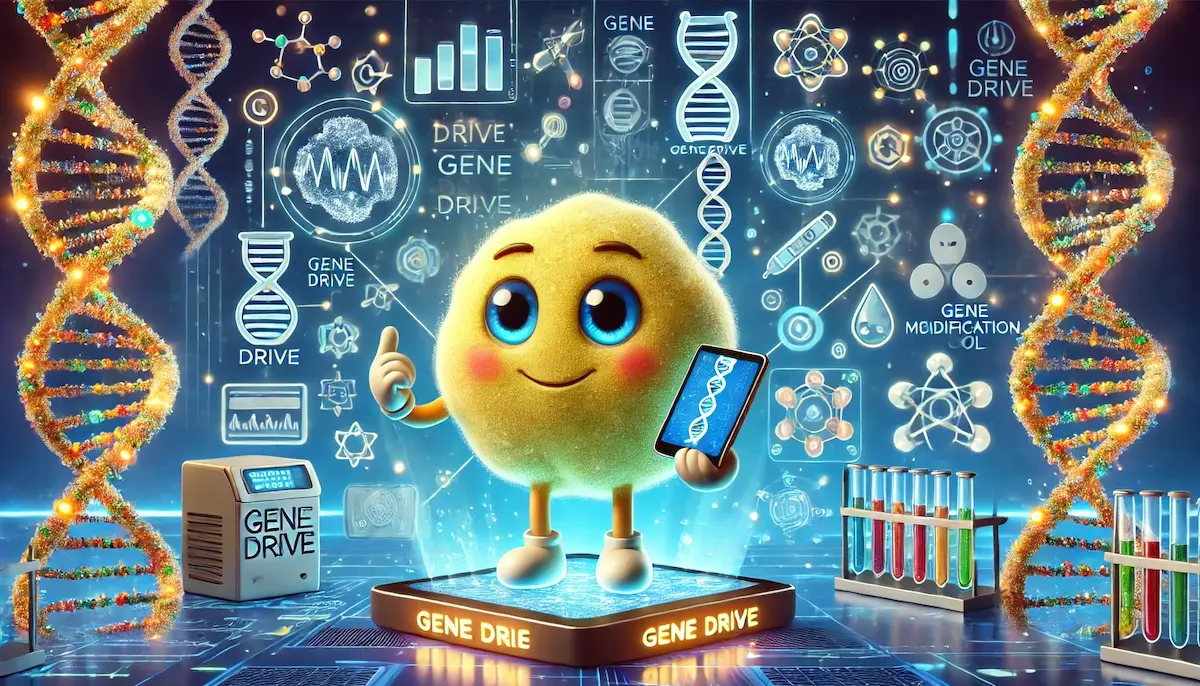Gene drive is a powerful genetic engineering technology designed to spread a specific gene or set of genes through a population more rapidly than would occur under normal inheritance patterns. By biasing the inheritance of particular genes, gene drives can potentially alter entire populations of organisms, offering innovative solutions to challenges like controlling disease vectors, managing invasive species, and even promoting biodiversity. However, this technology also raises significant ethical and ecological concerns.
The Basics of Gene Drive
In traditional Mendelian inheritance, offspring have a 50% chance of inheriting a gene from either parent. However, gene drives can dramatically increase the likelihood that a particular gene will be passed on to nearly 100% of offspring. This is achieved by using genetic engineering techniques, often involving CRISPR-Cas9, to ensure that the gene drive mechanism is inherited preferentially.
Here’s how a gene drive typically works:
- Gene Editing: A gene drive is created by inserting a specific gene along with the CRISPR-Cas9 machinery into the genome of an organism. The CRISPR-Cas9 system is programmed to target and cut a particular DNA sequence in the organism’s genome.
- Gene Conversion: When an organism carrying the gene drive mates with a wild-type organism, the CRISPR-Cas9 machinery in the gene drive cuts the wild-type gene in the offspring. The cell’s natural repair mechanisms then copy the gene drive from the other chromosome to replace the cut DNA, ensuring that the offspring inherits the gene drive on both chromosomes.
- Spread Through the Population: As organisms with the gene drive reproduce, the gene drive continues to spread rapidly through the population, potentially affecting an entire species over several generations.
This ability to override traditional inheritance makes gene drives a powerful tool for rapidly spreading beneficial traits or reducing harmful ones within populations.
Applications of Gene Drive
Gene drive technology has the potential to address a wide range of ecological and public health challenges:
Controlling Disease Vectors
One of the most promising applications of gene drive is in controlling disease-carrying insects, such as mosquitoes that transmit malaria, dengue fever, and Zika virus. Gene drives could be used to spread genes that either reduce the population of these mosquitoes or render them incapable of transmitting diseases. For example, a gene drive could be designed to spread a gene that causes infertility in female mosquitoes, leading to a sharp decline in mosquito populations and, consequently, a reduction in disease transmission.
Managing Invasive Species
Gene drives could be employed to control or eliminate invasive species that threaten native ecosystems. By spreading genes that reduce fertility or survival in invasive species, gene drives could help protect endangered species and restore ecological balance. For example, gene drives might be used to control invasive rodents on islands, where they pose a significant threat to native bird species by preying on eggs and chicks.
Promoting Conservation and Biodiversity
Gene drives could potentially be used to promote the conservation of endangered species by spreading beneficial genes that enhance survival, such as resistance to diseases or environmental stressors. However, this application is still theoretical and would require careful consideration of ecological impacts.
Agricultural Pest Control
In agriculture, gene drives could be used to control pests that damage crops, reducing the need for chemical pesticides. By spreading genes that make pests more susceptible to natural predators or less capable of reproducing, gene drives could help protect food supplies in a more environmentally friendly way.
Ethical and Ecological Considerations
While gene drive technology holds great promise, it also raises significant ethical and ecological concerns:
Unintended Consequences
One of the primary concerns with gene drives is the potential for unintended ecological consequences. Altering a species’ population dynamics could have ripple effects throughout the ecosystem, potentially harming non-target species or leading to unforeseen environmental changes. Once released, a gene drive can be difficult, if not impossible, to reverse, making it crucial to carefully assess potential risks before deployment.
Ethical Concerns
The ability to engineer entire populations or species raises ethical questions about human intervention in nature. Deciding when and how to use gene drives involves considering not only the potential benefits but also the moral implications of altering ecosystems and the rights of affected communities and nations.
Governance and Regulation
The global implications of gene drive technology necessitate robust governance and regulation. International collaboration and oversight are essential to ensure that gene drives are used responsibly and that their potential risks are carefully managed. Transparent decision-making processes, involving scientists, ethicists, policymakers, and the public, are crucial to addressing the complex issues surrounding gene drives.
Potential for Misuse
There are also concerns about the potential misuse of gene drive technology, such as the creation of harmful gene drives that could be used for malicious purposes. This underscores the importance of regulating and controlling access to gene drive technologies to prevent their use in ways that could cause harm.
The Future of Gene Drive
The future of gene drive technology is both promising and uncertain. Ongoing research is focused on improving the precision, safety, and controllability of gene drives, as well as developing potential safeguards, such as gene drives that can reverse or neutralize other gene drives. Scientists are also exploring “local” gene drives that are designed to spread only within a specific population or geographic area, reducing the risk of unintended global impacts.
As the technology advances, it will be crucial to balance its potential benefits with careful consideration of the ethical, ecological, and societal implications. With appropriate safeguards, responsible governance, and international cooperation, gene drives could become a valuable tool for addressing some of the world’s most pressing challenges.
Blockfine thanks you for reading and hopes you found this article helpful.
